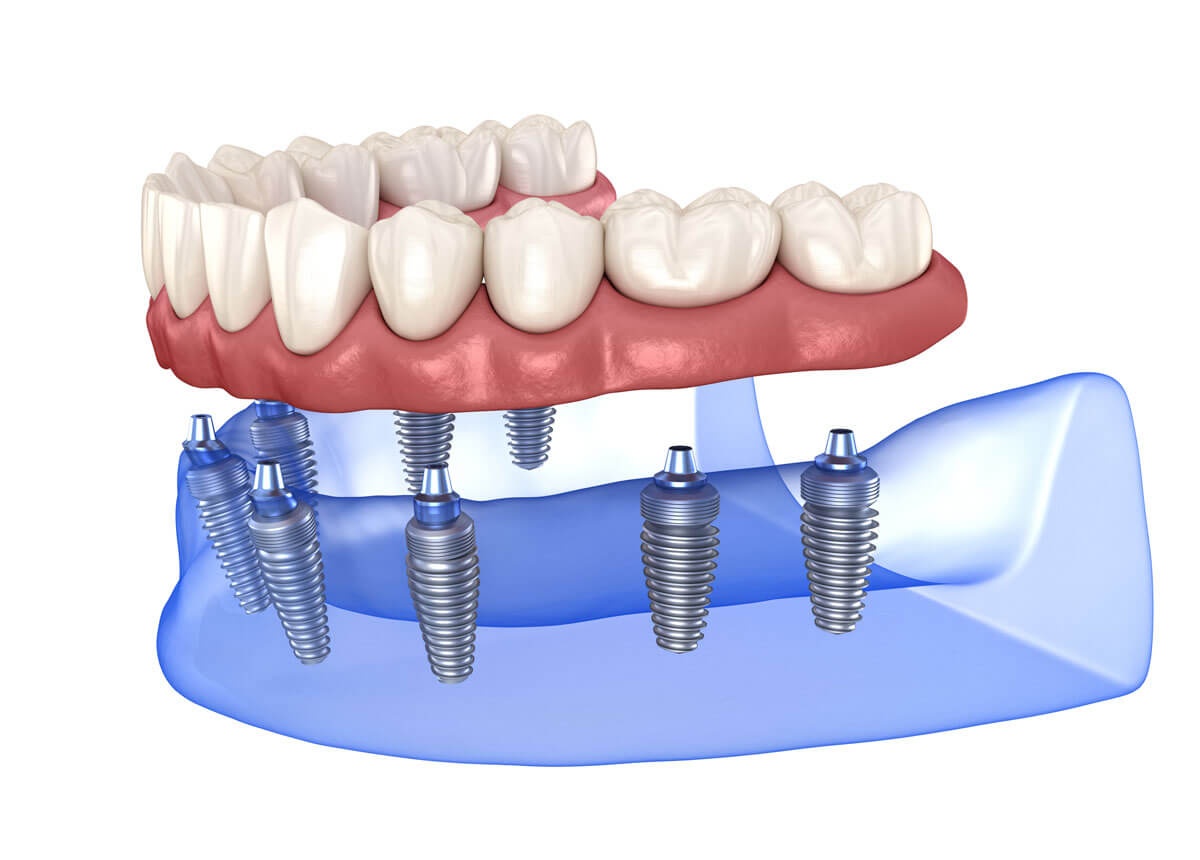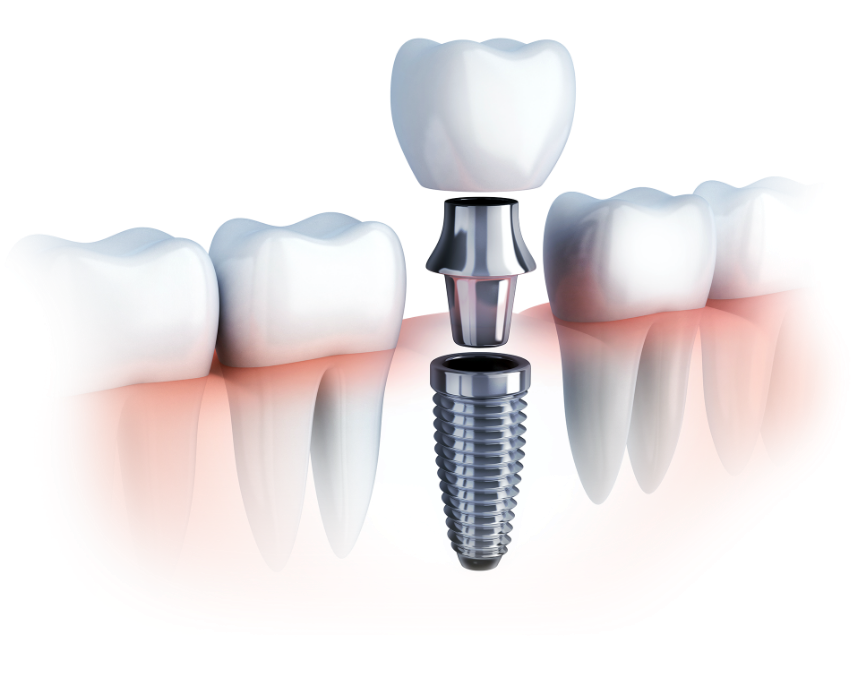Facts About Dental Sense Revealed
Wiki Article
The Only Guide for Dental Sense
Table of ContentsThe Greatest Guide To Dental Sense3 Easy Facts About Dental Sense ShownDental Sense Things To Know Before You BuyThe 3-Minute Rule for Dental Sense
are clinical gadgets operatively dental implanted right into the jaw to recover an individual's capacity to chew or their appearance. They supply support for fabricated (fake) teeth, such as crowns, bridges, or dentures. When a tooth is lost because of injury or condition, an individual can experience complications such as rapid bone loss, faulty speech, or adjustments to chewing patterns that cause pain.Oral implant systems are composed of an oral implant body and oral implant abutment and might also include a joint addiction screw. Front tooth filling. The oral implant body is operatively inserted in the jawbone instead of the tooth's origin. The oral implant abutment is typically connected to the implant body by the joint fixation screw and prolongs with gum tissues right into the mouth to support the connected synthetic teeth
(https://dentalsense.godaddysites.com/f/transform-your-smile)Structure of The Oral Implant System selecting oral implants, talk to your oral company about the potential benefits and threats, and whether you are a prospect for the procedure. Points to take into consideration: Your total health and wellness is an important consider identifying whether you are a good prospect for dental implants, how much time it will take to heal, and the length of time the dental implant may remain in area.
Smoking might impact the recovery process and reduce the lasting success of the implant. The recovery procedure for the implant body may take numerous months or longer, during which time you usually have a short-lived abutment instead of the tooth. the oral implant treatment: Meticulously adhere to the dental hygiene guidelines provided to you by your dental provider.
The Buzz on Dental Sense
Implant failing can lead to the need for an additional surgery to take care of or replace the dental implant system. Restores the capability to eat Brings back aesthetic look Assists maintain the jawbone from reducing because of bone loss Preserves the health of the bordering bone and gum tissues Aids keep adjacent (close-by) teeth steady Enhances quality of life Damages to bordering natural teeth throughout implant placement Injury to the surrounding cells throughout surgical procedure, such as sinus opening Injury during surgical procedure (for instance, fracture of bordering jawbone) Insufficient function, such as seeming like the teeth do not attack together typically An experience that the tooth is loosened or turning in place arising from a joint screw loosening Implant body failing (looseness of the implant body) due to systemic infection, which might be most likely in people with uncontrolled diabetics issues as a blog here result of regional infection in bone and periodontals sustaining the implant body because of delayed healing, which may be more probable in individuals that smoke Problem cleaning up the gum tissues around the implant, leading to poor oral hygiene Neglected gum disease Post-surgical pins and needles as a result of nerve impingement or damage Always notify healthcare suppliers and imaging technicians that you have oral implants prior to any magnetic resonance imaging (MRI) or x-ray treatments.FDA is not conscious of any type of unfavorable events reported for MRI or x-ray treatments with oral implants. Dental implants systems are usually constructed from materials that adhere to global consensus criteria of the International Company for Standardization (ISO) or ASTM International. These requirements have information of what makes a safe material.

An oral implant is a framework that replaces a missing out on tooth. With screw-like tools, the doctor inserts an implant into the jawbone, and it works as an anchor for an artificial tooth, called a crown. A device called a joint attaches the synthetic tooth to the oral implant. The crown is customized to fit the individual's mouth and match the shade of their teeth.
Getting My Dental Sense To Work
Some individuals are not qualified for oral implant surgical treatment. It is for oral surgeons to operate on people with: intense illnessuncontrollable metabolic diseasebone or soft tissue illness or infectionIf these problems are fixed, an individual can have the surgical treatment. In, dental doctors avoid operating on individuals with: If individuals with any of the above go through oral implant surgical treatment, there is a higher threat of the dental implant stopping working.
Dental dental implant surgical treatment is a personalized procedure. It's not the exact same for every person. The following provides a basic summary of what you can expect your dental professional, oral doctor, periodontist or prosthodontist to do: Put the dental implant surgically. Give you time to heal. Attach the article and final crown, bridge or denture.
Next off, your specialist will very carefully place the oral implant into your jaw. Ultimately, your doctor will certainly rearrange your periodontals and close the incision with stitches. If your implant is near the front of your mouth, your dentist will make a short-lived tooth for you to use till you heal. That way, you won't have a void in your smile while you recuperate.
Getting The Dental Sense To Work
During the healing phase, your jawbone ought to fuse to the oral implant. This procedure can take anywhere from three to 9 months.As soon as your dental implant heals, your dental professional can affix the abutment (little connector post) and your final repair (crown, bridge or denture). This typically takes concerning one hour to finish and might require a second minor surgical treatment. You should not feel any kind of pain throughout your oral implant treatment because your service provider will make use of drug to numb your gum tissues.
Report this wiki page